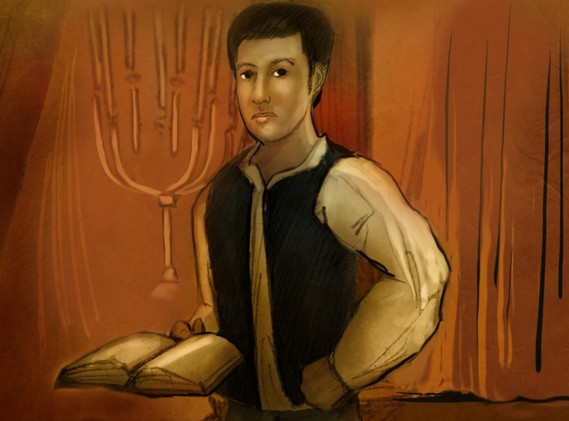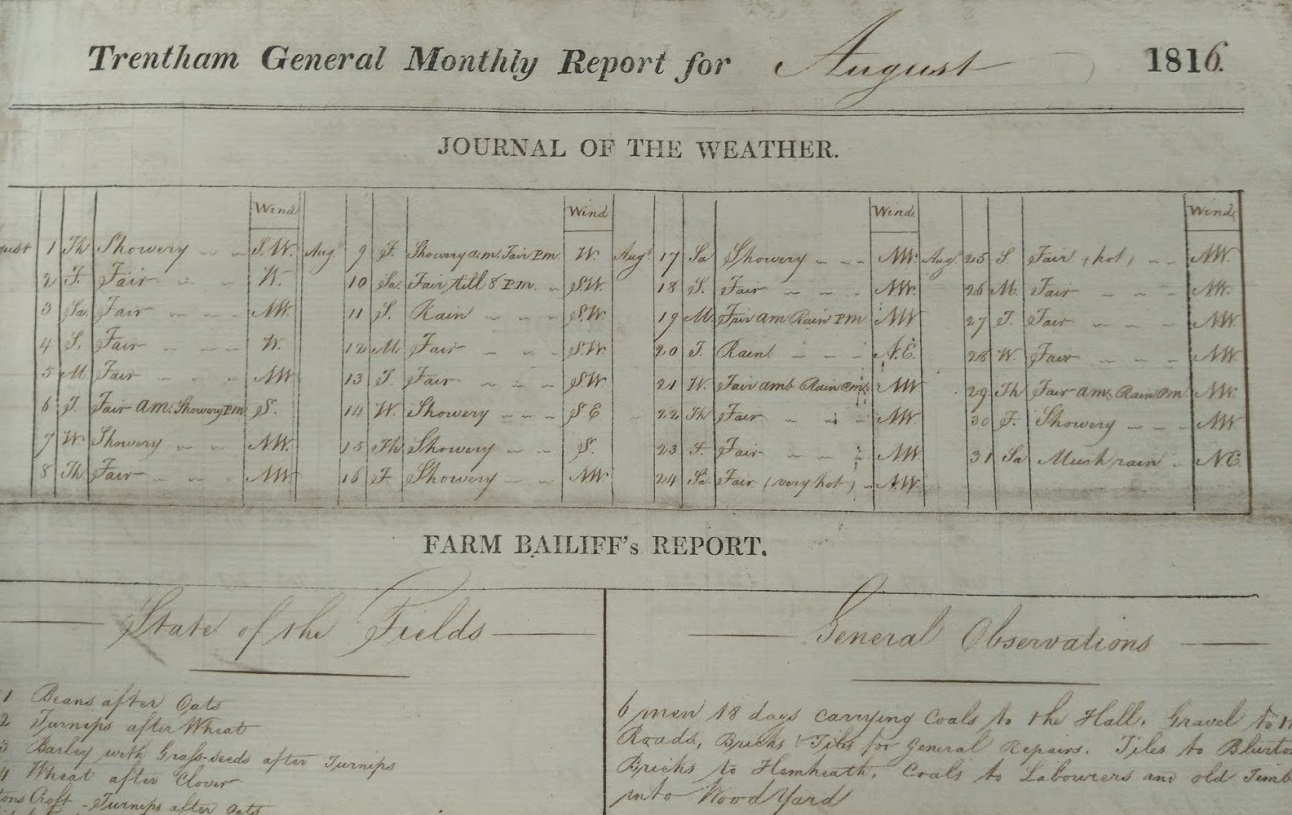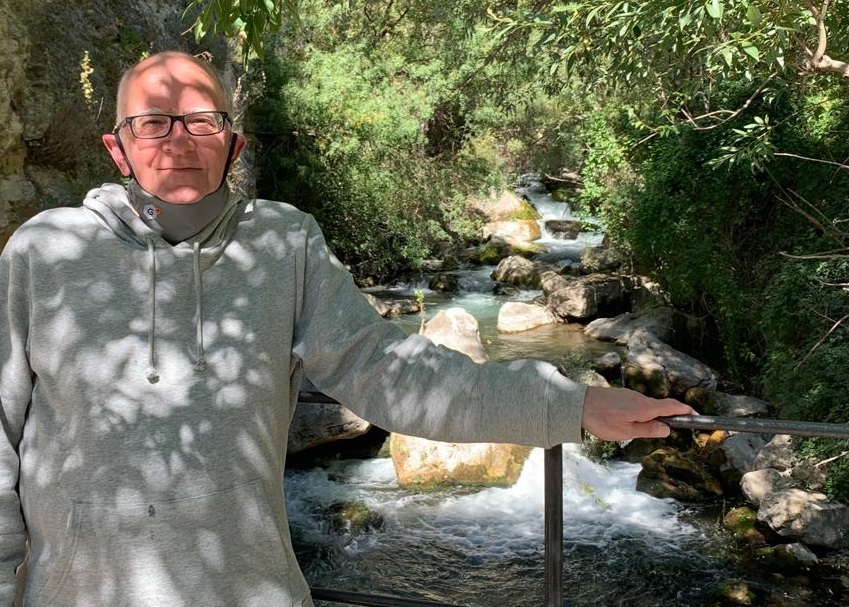 Samuel Barber
Tunstall - A film by Jason Young
A special screening online of ‘Tunstall’, a short animated film by Jason Young, for Black History Month is part of the Staffordshire Libraries online History Festival. The film is currently streaming on the Staffordshire Libraries Facebook and Twitter pages.
Jason Young’s film tells the story of Samuel Barber, the first Black British Local Preacher in the Primitive Methodist Church in Tunstall, Staffordshire, between 1809-1828. It is a story of Samuel’s faith interwoven with the birth of Primitive Methodism breaking away from Wesleyan Methodism.
Samuel Barber’s father, Francis Barber, was the Jamaican servant of Dr. Samuel Johnson. Samuel was born a free man in 1783 in London and Jason says "It is this theme of the free black man in an era of slavery that I want to explore in this project. The sub-plot is interwoven with the theme of loss: the loss of Samuel’s father, the loss of his silently grieving mother, the loss of his sister who is denied the cherished gift of marriage and family, and then the ultimate loss of Samuel himself at the age of 44 on the 6th July 1828. All human beings have experienced loss of one form or another, and so this element would make the story universal and accessible to everyone. There is also the theme of excommunication which should appeal to audiences who are the margins of society and have experienced some form of discrimination that has excluded them from social or economic advancement: Samuel is excommunicated from the Church of England; Hugh Bourne is expelled from the Methodist Society; William Clowes is expelled from the Methodist Society. My creative vision for this project is to make audiences feel what it is like to be social, emotionally and spiritually excluded".
‘Tunstall’ explores what it is like for a free black man to live in the 19th century during an era of slavery. Jason believes "that contemporary black audiences need to see themselves reflected in British period dramas as they were there at the time".
See the film via a link on Staffordshire Libraries Facebook Page https://www.facebook.com/staffordshirelibraries or Twitter page @StaffsLibraries. The link will be active until 31st October.
For more information about Black History Month please visit https://www.blackhistorymonth.org.uk/ or @BhmUK on Twitter or @blackhistorymonthuk on Facebook.
 Short Talks for Groups and Societies with Dr Alice Harvey-Fishenden
(University of Liverpool)
Climate change impacts manifest in different ways across space and time. In this presentation, I will explore the Staffordshire climate, through documents at the Staffordshire Record Office. We will discuss the climate as recorded in eighteenth and nineteenth century documents and consider topics such as seasons, snow and rain. This talk will incorporate some of the results of the recent Historic Flooding and Drought in Staffordshire project (2016-2020).
Talks can be done in person (subject to contemporary covid-19 related protocol) or I can host them online through the University of Liverpool’s zoom. There will also be opportunities for less formal interactive coffee morning style talks with small interested groups on zoom (contact me for more information).
To book or for more information, please email Alice aohf@liverpool.ac.uk
The talk is free (the project is funded by the Arts and Humanities Research Council)
The CLANDAGE project (Building Climate Resilience through Communities, Landscapes and Cultural Heritage project) has been funded by the Arts and Humanities Research Council, through the Climate Resilience program, to investigate how landscapes, communities and people have historically and continue to experience, cope and adapt to climate change. The research will combine new and existing work on historical records, archives and oral histories.
There are 3 strands to this project, one here in Staffordshire in partnership with the Staffordshire Record Office, another centred around the River Eden in Cumbria alongside researchers from Historic England, and the third working with the Museum & Tasglann nan Eilean Siar in the Outer Hebrides. In Staffordshire we will be exploring how communities have adapted to climate change to become more resilient, focussing on extremes of precipitation and temperature. We will be running a range of events and activities over the next 2 years, working towards the creation of a touring exhibition. This will begin with a series of talks, which are likely to take place online.
 Tim in Andalucía, Oct 2020
This week we meet Tim Groom, Senior Archivist (Online Access and Transformation) who has held a variety of roles during his time with the Service.
What does your role involve?
I have responsibility for public services at Staffordshire Record Office, the Service’s main website, online catalogue and Staffordshire Name Indexes site. I also assist with general management of the archives side of the Service.
When did you start working with the Archives and Heritage Service?
I joined the Archive Service, as it was then, in 1986.
What is your favourite object or document or photograph from the collection?
I have a couple of favourite documents, but for the purposes of this article I will choose just one – the account roll of the clerk of the stock and clerk of the wardrobe to Edward Stafford, 3rd Duke of Buckingham, 1516-1517 (ref.: D641/1/3/9). Buckingham was the greatest nobleman in England in the early part of the reign of Henry VIII, until his downfall and execution in 1521. This document sheds light on both the stock in hand and the level of consumption of luxury goods and other items in a late mediaeval noble household, including cloth of a wide variety of qualities, colours, etc., furs, personal accessories, livery (including Stafford knots), hawking and hunting equipment, books, plate and jewels, “artillery” (bows, arrows, etc.), armour and other military supplies, and a wide range of miscellaneous items. It also covers outstanding debts owing to the duke from the previous seven years, with recent credits made against those debts. The roll consists of 40 sheets of paper sewn together top to tail. The compilation and submission of this document to the duke and his board of auditors would have been an annual, painstaking chore for the clerk.
What is your most memorable moment about working for the Service?
There are two. The first was attending the awards ceremony in Westminster for the award of Chartermark to Staffordshire Record Office in 1999. I worked with Thea Randall, then County Archivist, for over a year, reviewing our policies, processes and procedures, and then compiling the evidence to support our application. The process of applying, and later maintaining the award, and its successor Customer Service Excellence, helped the Service to examine all aspects of our public-facing services in detail and focus on incremental improvements over many years, resulting in a service that remains of high quality and responsive to public demand.
The second was a very unpleasant experience. I was part of a team of four archivists which visited a basement housing a significant archive of documents going back up to 500 years. We were faced with a large pile of tea chests filled with damp documents covered with thick layers of mould of virtually every colour of the rainbow. Thankfully, we were forewarned of the conditions and wore protective overalls, face masks and gloves. I’m unable to recall now what proportion of the collection was salvageable.
Away from work, do you have a hidden talent or special skill?
The ability to make chocolate, marzipan, biscuits and desserts disappear!

Join us in The Learning Room to discover a range of articles based on research and collections across the Archives and Heritage Service. You can sign up here
Jim Sutton's review of the book "Orphan to Pottery Manufacturer: The Story of a Family Business over Four Generations" by J.S. and C.S. Weatherby for the North Staffs Historians.
This is a family saga but unlike such works written as fiction this concerns the story of a real North Staffordshire family told by family members. It is an account of the Weatherby family from early beginnings to their establishment as pottery manufacturers of repute operating from their factory at Town Road Hanley until the year 2000. The story is compiled from the notes and recollections, written in an anecdotal fashion, of the late J.S. Weatherby, grandson of the founder of the firm following his retirement in 1992, these have been edited and supplemented by his son C.S. Weatherby who sadly died shortly after completing the task. Both father and son were directors in the business. Although lacking a formal literary style it tells effectively the story of the business, interwoven with working life and the family, over a period of 150 years or so.
The book starts with a brief outline of the history of the Weatherby family tracing their North Staffordshire roots but the real story begins with the early life of John Henry Weatherby, born 1843, leading through his career up to the creation of what became the family business at Falcon Pottery in High Street, later Town Road, Hanley and tracing the company’s development up to the retirement of J.S. Weatherby in 1992. It concludes with a good account of the factory buildings, plant and machinery and of working processes, up to the date of closure in 2000 in the section written by C.S. Weatherby. It is liberally illustrated with pictures of the works, the workforce and several generations of the family and contains reflections on the changing patterns of social life, the trials and tribulations of family life and accounts of many of the work people over the period 1891 to 2000.
There are, as is the case with most such publications of this nature, a number of short comings. There is no index and a glossary of pottery trade terms would have been of help to those unfamiliar with the industry. A number of minor errors have crept into the appendices but these are not of major substance and do not detract from the interest and value of the main text.
Copies of the book are available from Mrs C. Weatherby, 4 The Avenue, Alsager, Stoke-on-Trent, ST7 2AN Telephone 01270 874481 Price £9.00 plus post and packaging £2.50 first class; £2.00 second class.
Our aim is to keep you updated with the latest developments and events. If you do not wish to receive this newsletter please use the 'unsubscribe' button at the bottom of this page.
|